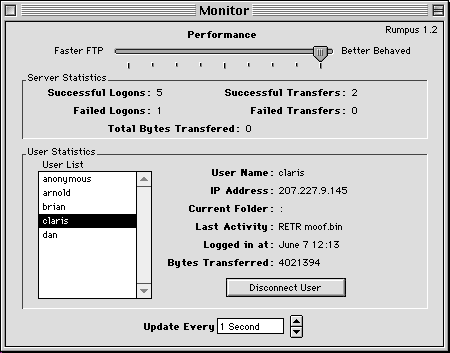
Figure 17: Use the Monitor window to track connection and usage statistics.
The Monitor window, shown in Figure 17, allows you to set a performance level at which Rumpus will serve FTP users, as well as review server usage.

You may adjust the performance bar to meet the needs of your computing environment, but be especially aware of how dedicating your server to Rumpus may degrade the performance of other applications running on your server. The most important factors in deciding how much processing power to give to Rumpus are:
Figure 18 gives a guideline for where you may want to set the performance slider, based on the Internet connection used to service clients.

In addition, if you are running Rumpus to handle file downloads or remote page administration for a Web server running on the same machine, you will probably want to set Rumpus all the way over to "Better Behaved". In this setting, Rumpus will have almost no impact on the performance of your Web server, but will still serve files at hundreds of Kbytes per second. In any event, you should reserve the "Faster FTP" side of the slider for dedicated FTP servers on fast network connections.
When you set performance on the "Faster FTP" half of the slider, you may notice that Rumpus (and all applications on the Mac) begin to feel sluggish. Rumpus will feel slow because it will be spending almost all of the available CPU time to serve files. The user interface, therefore, will become sluggish, while FTP services will be very fast.
The lower two thirds of the Monitor window displays several general server statistics, in addition to statistics on each connected user. The general server statistics are reset each time Rumpus is restarted. The Monitor window is divided into two sections, Server Statistics and User Statistics.
The Server Statistics portion of the Monitor window contains the following fields:
Successful Logons
Failed Logons
Successful Transfers
Failed Transfers
Total Bytes Transferred
The User Statistics portion of the Monitor window contains the following fields, where selecting a user name will display the detailed information for that user.
User Name
IP Address
Current Folder
Last Activity
Logged In At
Bytes Transferred
In addition to these user statistics, a "Disconnect User" button is provided. Pressing this button will disconnect the currently selected user. This procedure is not graceful, and no warning message will be sent to the user before they are disconnected. Whatever process the user is currently involved in will be halted, and the TCP/IP connection between the client and Rumpus will be dropped.
Finally, the "Update Every..." setting tells Rumpus how often to check for users and their activities before refreshing the Monitor window. Make this a reasonable figure, as it may slightly impact performance. On slower machines, we suggest that you have the monitor update no more frequently than every 5 seconds. If you are actively watching the activity on your FTP server, then set the interval to update more frequently. If the monitor is left open only to periodically glance at the window to be sure everything is functioning correctly, set the update period to once every minute or more.
Copyright © 1997-9 Maxum Development Corporation
http://www.maxum.com/